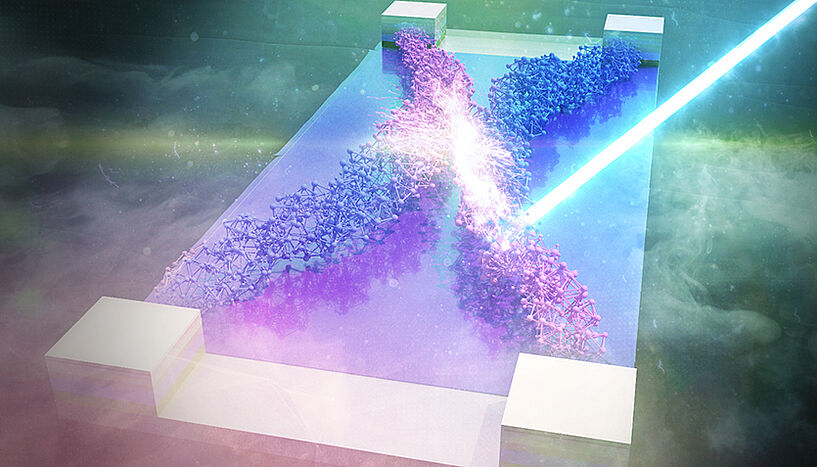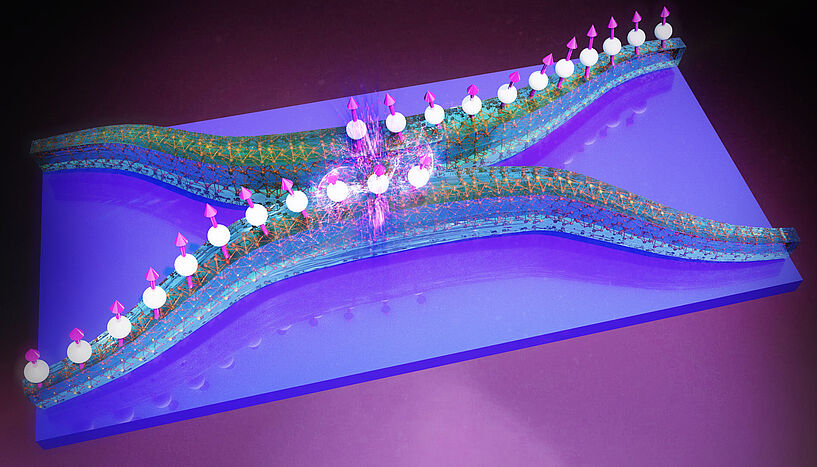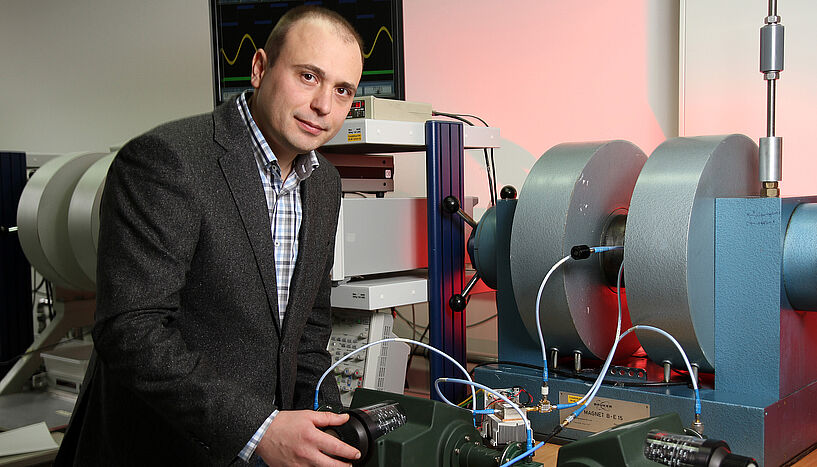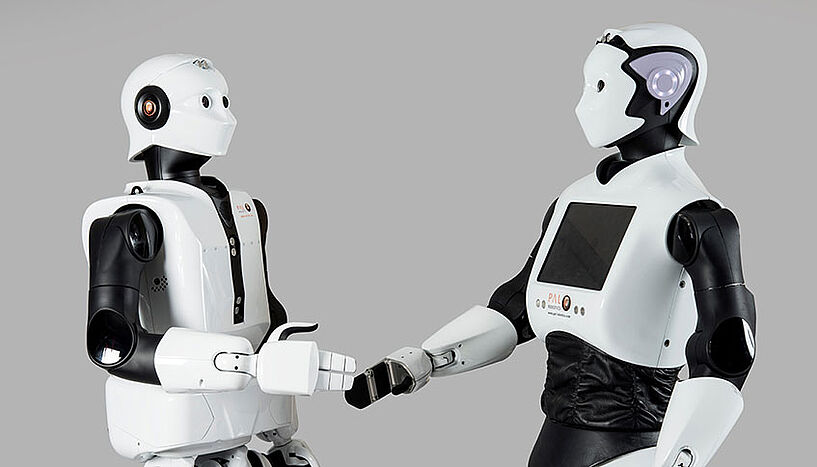A new generation of computers
| 14. April 2021Can computers of the future consume less energy while still becoming more powerful, smaller and faster? Physicist Andrii Chumak believes this is possible. In his ERC project MagnonCircuits, he is testing the possibilities of magnonics technology, which could one day replace CMOS.
Magnonics is a relatively new field of research within the field of magnetism. "Classical magnetism is mainly used for data storage", explains Andrii Chumak, Professor of Nanomagnetism and Magnonics at the Faculty of Physics. But what is magnonics technology all about? "If you throw a stone into water, waves are created", says Chumak. It works in a similar way with magnons in magnetic materials.
A local disturbance in the magnetic order of a magnet can propagate in waves across a material. These waves are called spin waves and the associated quasi-particles are called magnons. They carry information in the form of spin current. Due to this feature, they can be used as low-power data carriers in next-generation information processing systems. Or, in other words, in smaller and more energy-efficient computers of the future.
Magnons instead of electrons
"Smartphones have already been powerful devices in the evolution of humanity," Chumak says. But it is not clear how this technology will evolve. He adds: "I remember times when the speed of a computer was doubling every year." But this trend stopped more than ten years ago, the devices got too hot. "The technology could be faster, but one needs too much energy for cooling," Chumak explains. And that, at least according to the current state of the art, is not very sustainable.
The goal of the ERC project MagnonCircuits, led by the University of Vienna and the Technical University of Kaiserslautern, was therefore to test the possible use of magnons as data carriers in computers. The research team succeeded in developing a new component of computer circuits that uses magnons instead of electrons to transmit information, which was actually a big breakthrough. To do this, they designed an integrated circuit using magnetic material and magnons to send binary data – in other words, the 1s and 0s that are the basis of existing smartphones and computers. The circuit developed is tiny, consuming about 10 times less energy compared to the current state-of-the-art computer chips based on CMOS, the complementary metal-oxide-semiconductor technology.
Faster, smaller and more energy-efficient
The downside is that the current magnon configuration is also not as fast as CMOS. However, the model can now be further explored for other applications, such as neuromorphic or quantum computing. The researchers are very happy about this result, since we can now see the potential that magnon circuits can be as good as CMOS. Nevertheless, he believes this is not a considerable incentive for the industry yet. "Switching from electrons to magnons as data carriers means building everything from scratch", Chumak says. For investments, he thinks, it must therefore be clear that the new technology is orders of magnitude faster, smaller and more energy-efficient."
The size of the nanocircuit's components is already less than 1 μm, some are as small as 50 nm, barely visible even under a microscope. The circuit comprises three nanowires made of a magnetic material known as yttrium iron garnet. The wires are arranged in series to form two "directional couplers" that conduct magnons carrying data across the wires. The waves are created by distortions in the magnetic order of the solid material. A major effort was to find and learn how to control a suitable magnonic nonlinear property, or to be more precise, to find a way to manipulate the flow of data with the number of magnons. Particularly the powerful spin-wave physics allows for the decrease in the number of elements in computing devices up to ten times. Millions of the developed units combined in one circuit can handle modern computers' tasks but spending substancially less energy. (sn)
The project MagnonCircuits was funded by the European Research Council (ERC) in the course of the research and innovation programme Horizon 2020 of the European Union. The project leader is Andrii Chumak from the Faculty of Physics at the University of Vienna, scientific researchers are Qi Wang, Elisabeth Weiß, Michael Schneider, Björn Heinz, Michael Kerber, Sebastian Knauer and Oleksandr V. Dobrovolskiy.






